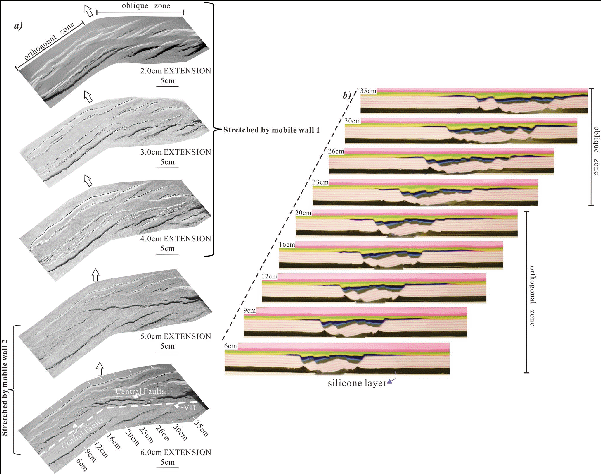in the rapid development new eraof earth system science, the combination of modern earth explorationtechnology and information technology has become the key to integratemacro and micro, qualitative and quantitative, deep and shallow, deeptime and future earth science research. we are committed to theapplication of basic theory of mathematics, physics and biology andthe latest technology of information technology in the earth sciencesystem, using the big data of earth science and high performancecomputing technology to quantitatively study important geologicalphenomena and geological processes, revealing mineral properties andmineral evolution mechanism, element migration and enrichment rules,basin structure and accumulation dynamics, etc., in order to find newways to promote the quantitative research of earth science.
computationalgeochemistry: fluidsand melts are important forms of earth materials. they are the majormedium for the circulation of matter and energy transfer on theearth. their structures and evolutions form the microscopic basis ofvarious macroscopic geodynamic processes. in order to revealatomic-scale structures of fluids and melts, quantitative informationof thermodynamics and kinetics, phase transition under high p-textreme conditions, we apply quantum mechanics based first-principlessimulations to study the microscopic structures, thermodynamics andtransport properties of geological fluids and melts, and thespeciation, thermodynamic and kinetic behaviors, and the resource andenvironmental effects of important elements/isotopes.

computationalmineral physics and chemistry: "tosee a world in a grain of sand " - the analysis of the solidearth from the atomic level. from the surface to the earth's core,the earth's macroscopic structure depends on the spatial distributionand temporal evolution of the constituent minerals. geophysicalproperties are the macroscopic expression of atomic spatialarrangement and the inter-atomic interaction in the mineral lattice.the central point to many geochemical processes in the surface anddeep parts is the mechanism of the mineral-fluid (melt) interfacialinteraction. using classical and quantum molecular dynamicssimulation methods, we calculate the thermodynamic properties, phasetransition, elastic and transport properties of minerals under hightemperature and high pressure conditions at atomic scale. our studyprovides theoretical basis for analyzing the composition of deepearth's materials, constraining the process of the core-mantleboundary and the mechanism of crust-mantle interplay; constructingatomic models of the structure of mineral surface and interface,revealing the key points of minerals dissolution, nuclear growth,adsorption, ion exchange and equilibrium isotope fractionation, etc.based on our research, the mechanism and effect of mineral evolutionand mineral reaction under broad geological conditions are expounded.

mineralevolution dynamics :mineralsare not only the hosts of element concentration and redistribution,but also as fingerprints for the elemental evolution and geodynamicprocesses in solid earth. on the basis of the micro-characterizationsand principles of mineral crystal chemistry, our group focus on themineral formation and evolution history during variousgeodynamic processes, especially on rock and ore-forming, earthsurface process and environmental evolution. integrating multiplein-situ microanalysis, synchrotron radiation support technology, aswell as geochemical dynamics modeling experiments, we gain insightinto mineral micro-dynamic behavior on breakdown, migration andre-precipitation in earth’s interior and supergene environment, andattempt to establish models of mineral-fluid, biological-mineralinteraction and environmental mass transfer which are essential forunderstanding the geochemical cycle of elements and evaluating theresource and environmental effects.

quantitativeanalysis of basin structure and ore-forming dynamics:structuralevolution is the intrinsic factors of surface morphology change. asthe basic construction unit of the earth's surface, basin is not onlya product of geological processes, but also the reservoir of oil, gasand other mineral resources and water resources. based on structuralinterpretation and quantitative analysis, combining with the physicaland numerical simulation methods, we analyze the basin structures,their evolution process and dynamics, and establish the accumulationmodels of hydrocarbon and nonmetallic minerals of basins.

explainingstructural difference between the eastern and western zones of theqiongdongnan basin, northern south china sea: insights from scaledphysical models, yang, g., et al., 2022, tectonics, 41,e2021tc006899.
earthscience big data technology:earthscience big data have brought new ideas and challenges to earthscience research. the research interests in this field are as follows(but not limited in these aspects): (1) remote sensing and gistechnologies:to performdynamic monitoring of natural resources and environment, to conductearly warning and evaluation of geohazards, to derive grounddeformation triggered by natural or anthropogenic factors at highresolution and high precision based on remote sensing (includingoptical and microwave), gis and positioning technologies. (2)bigdata analysis techniques:toperform deep learning and analysis based on artificial intelligencetechnologies, to unravel and reveal the hidden relationship amongearth science big data to provide new solution to earth scienceproblems. (3)knowledge graph and big data application:toperform semantic translation and knowledge reasoning based on earthsciences knowledge graph, to implement earth science big datasharing, reusing and merging, to promote knowledge discovery drivenby earth science big data, and to deepen the development of earthscience research.


